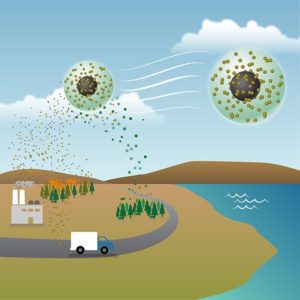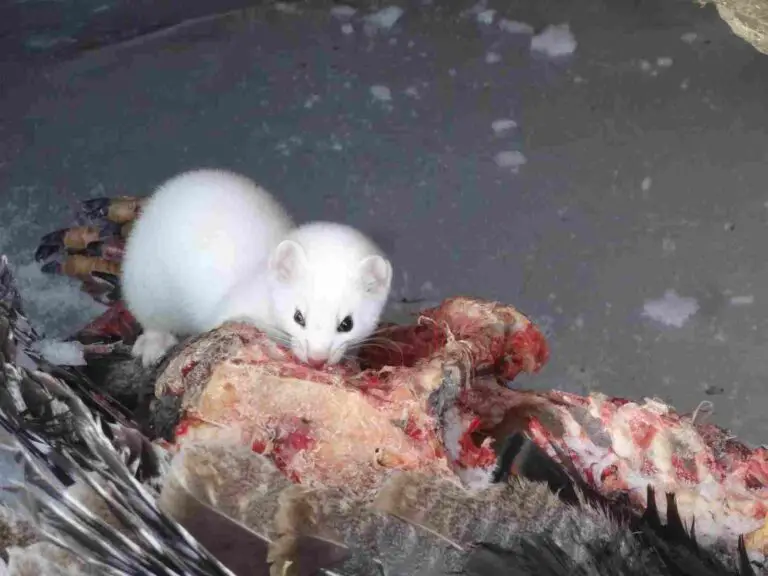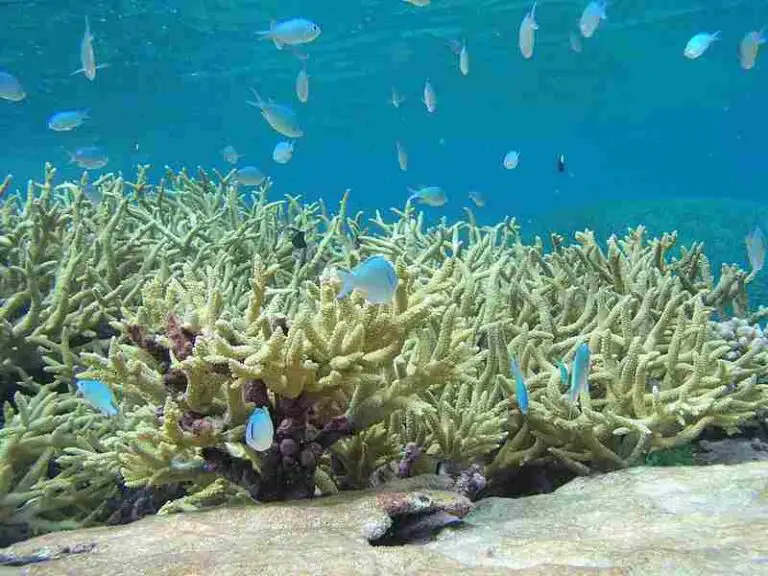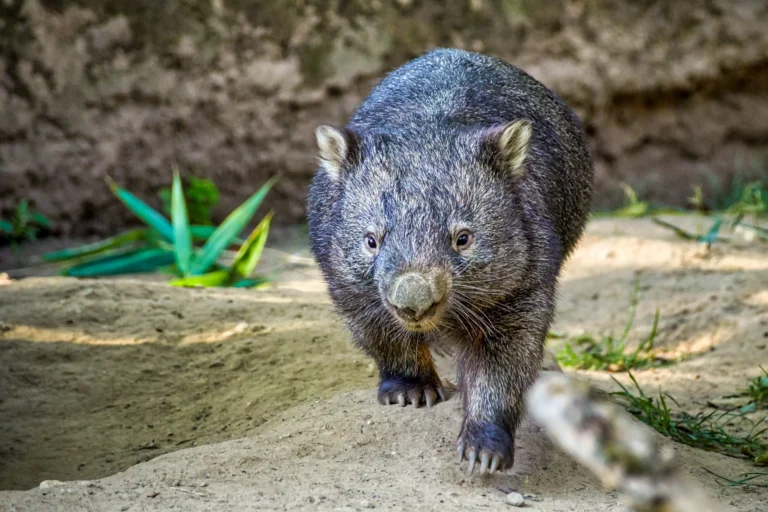Climate Change Meaning, Importance, and Contexts Explained
Climate change is the gradual and continuous alteration or modification, of the Earth’s atmospheric condition.
Although the above definition is completely correct, there is much more to the full meaning of climate change and why it is important in our society today.
This article provides 7 essential ways by which we can Define and Understand Climate Change and why it is important in our society. It includes the following;
1). Climate Change in relation to Weather Variation
2). Climate Change as an Act
3). Climate Change as a Process
4). Climate Change in relation to Global Warming
5). Climate Change in relation to the Greenhouse Effect
6). Climate Change in relation to Ozone Layer Depletion
7). Climate Change as a Movement
Definition 1: Climate Change in relation to Weather Variation
Explanation of Climate Change
To explain climate change, we must begin by understanding the meaning of the components which make up this concept. Therefore, we must start by asking the following question;
What is Climate?
While there are many definitions of climate, a simple approach will be to define it as the average weather condition of any given place, over an extended period of time [12].
Climate differs from Weather in the aspect of time. While weather is atmospheric condition at any given instant, climate requires a more prolonged time frame to be defined. Therefore, weather can vary on a daily basis; such that a 48-hour period can incorporate two different conditions of weather (like sunny and cloudy). Climate, on the other hand, may vary across cycles of multiple days, months or years.
Elements of Climate
These are the factors or criteria that enable scientists to study climate effectively. They include;
1). Temperature
2). Humidity
3). Atmospheric Pressure
4). Precipitation
How Long Does It Take to Determine Climate?
Basically, climatologists require a minimum of 30-years to give a reliable and finite description of the climatic condition. This description is called the Climate Normal.
How is Climate Normal Determined? Why do Climatologists need 30 years of Data to Describe Climate?
Climatologists require this amount of time, due to the high variability of the weather. Average weather conditions can vary significantly across only two years or two months. This implies that a much broader range of time is needed to provide a good average estimate.
In order to determine Climate Normal, climatologists usually cumulate the measurements of different weather elements like temperature, atmospheric pressure, humidity, and precipitation, over a 30-year period.
This cumulative is then divided by the number of measurements which were made within the specified period of time.
For example; if temperature and humidity are measured on a monthly basis for thirty years, the number of measurements will be equal to;
30×12 =360
This means that to get the Climate Normal, the 360 different values from measurements over the thirty-year period will be summed up. The final value from this summation may then be divided by the total number of measurements (360).
Alternatively, Climate Normal can be determined by taking the annual average measurement values for each of the thirty years, and dividing their sum, by 30.
Another reply to the question; What is Climate? is as follows;
Climate is the state of the different elements of the weather, and their variability, over time.
What this definition suggests is that climate is innately variable. It acknowledges that the weather (as we can describe based on its elements like humidity and temperature) does not remain constant. Rather, it will naturally and continuously Change over time.
Since the condition of the weather over a period of time is equivalent to Climate, our observations so far should mean that climate is also innately variable. In other words; Climate is not Stable or Constant, but Varies.
Climate and Change are therefore related by nature, and can not exist independently.
Given this understanding, we must understand the meaning of the second term which comprises Climate Change. This is the term Change.
What is Change?
As we have already pointed out, change in the weather and climate is natural and inevitable.
In fact, it can be said that change is inevitable in all aspects of the earth and the ecosystem.
This means that there are uncountable ways in which we can encounter and describe change, such as;
- Change in nature
- Change in business
- Change in technology
- Change in weather
- Change in trend
- Change in preference
- Change in chemical composition
- Change in shape
- Change in physics
- Change in science
- Change in philosophy.. and so forth
In all these different forms, we can define Change as an act and process by which an entity becomes different.
The word ‘different’ here, signifies a modification, transformation or alteration that leaves the entity in question, in a state or form which is not as it was before the change occurred.
Now that these terms have been individually defined, we may arrive at a proper definition of the broader term; Climate Change.
Based on the individual components of the concept, Climate Change can be defined as an act or process by which the condition of the weather in any given place, becomes different, or is modified continuously, over a period of time.
The above definition provides a well-grounded and holistic overview of the meaning of Climate Change.
To further our understanding, it is necessary to also discuss Climate Change as an Act, and Climate as a Process.
Definition 2: Climate Change as an Act
The Act of Climate Change
An Act represents a purposeful or influenced occurrence. Therefore, if climate is indeed an act, there must be some factors which are responsible for causing or influencing climate change.
What are the Causes of Climate Change?
To list briefly the main causes of Climate Change, we would include the following;
1). Burning of Fossil fuels like gasoline, diesel, shale oil, kerosene and coal
2). Cutting down of Trees (Deforestation)
3). Extensive Livestock Farming
4). Manufacture of Fluoride gaseous products like the chlorofluorocarbons
5). Use of Nitrogen-rich Fertilizers
6). Forest Wildfire
These factors may independently or collaboratively cause the continuous and intensive climate variations which we observe.
Definition 3: Climate Change as a Process
The Process of Climate Change
When we refer to climate change as a process; we imply that it is the result of a series of acts or events [9].
The meaning of this is simply that climate change is the result of different factors which act continuously, leading to long-term variations in the weather condition.
To fully visualize the process of climate change, we can apply the simple analogy below;
Causes-Process-Change
What the above depiction implies is that climate change is produced by the process of continuous action by its different causes, which include deforestation, fossil-fuel burning, etc.
Another way we can look at the process of climate change is by considering the related process which lead to the change of the climatic condition.
Three important examples in this category are;
1). Global Warming
2). The Greenhouse Effect
Definition 4: Climate Change in relation to Global Warming
Climate Change and Global Warming
While Global Warming and Climate Change are closely related concepts, they can be identified by unique individual definitions.
What is the Difference between Climate Change and Global Warming?
The difference between climate change and global warming lies in the fact that global warming is solely restricted to temperature conditions, while climate change involves other elements of the weather, such as humidity, precipitation and atmospheric pressure.
We can better understand this by looking at the definition of Global Warming, and comparing it to earlier definitions of Climate Change in this article.
What is Global Warming?
As the term implies; Global Warming refers to a process by which the average atmospheric Temperature near the Earth surface increases consistently over time [13].
By a slightly different approach, Global Warming can be defined as the global rise in temperature mainly as a result of the increase in the concentrations of greenhouse gases in the atmosphere [16].
This definition brings yet another concept into the picture: The Greenhouse Effect.
It shows how closely related and interdependent these processes are to each other.
How is Climate Change Related to Global Warming?
As we may observe from comparing their individual definitions, global warming is in fact a core aspect of the process of climate change.
This means that climate change does not occur without the rise in global atmospheric temperature near the Earth’s surface.
Global warming itself is a product of other important processes, which we are discussed below;
Definition 5: Climate Change in relation to the Greenhouse Effect
Climate Change and the Greenhouse Effect
The Greenhouse Effect is very similar to the concept of Global Warming.
What is the Greenhouse Effect and What Causes it?
The Greenhouse is simply the warming of the lower atmosphere (or Troposphere) and the Earth’s surface due to trapped solar radiation [3].
This solar radiation is trapped by a group of chemical substances known as Greenhouse Gases. These gases can be said to be the main cause of the greenhouse effect.
There are 4 main greenhouse gases based on broad classification. However, there are up to 8 distinct groups of greenhouse gases in total.
What are the 8 Greenhouse Gases?
The 8 Greenhouse Gases are;
1). Carbon dioxide (CO2)
2). Water vapor (H2O)
3). Methane (CH4)
4). Ozone (O3)
5). Nitrous oxide (N2O)
6). Chlorofluorocarbons (CFCs, HCFCs)
7). Perfluorocarbons (C2F6, CF4)
8). Hydrofluorocarbons (HFCs) [23]
Asides the greenhouse gases, some other gases are known to contribute to the greenhouse effect. These gases are called Aerosols.
What are Aerosols?
Aerosols generally refer to liquid droplets or fine solid particles which are suspended in air.
Aerosols may be natural or man-made. Natural aerosols include Fog, Dust and Mist.
Anthropogenic or man-made aerosols are the ones which affect the environment. They include Ammonia, Black Carbon, and Sulfur dioxide.
How do Aerosols Affect the Climate?
Aerosols like sulfur dioxide, fog, dust and ammonia speed up cloud formation and may reduce the amount of heat from the Sun which reaches the Earth’s surface.
However, aerosols mat also increase atmospheric temperatures and speed up Global Warming.
For example, black carbon (or soot) in the atmosphere, absorbs and retains heat both from the sun and from the Earth’s surface.
This heat which is retained in the atmosphere warms the surface of the Earth intensely, while contributing to atmospheric pollution
An example of this issue is experienced in places where petroleum-related activities are intense, like Niger Delta area of Nigeria.

The man-made aerosols can affect the climate mainly due to the propellants which they often contain.
Propellants in Aerosols
Why are Propellants used in Aerosols? we may ask.
These propellants are used mainly because they provide the gaseous pressure required to expel and disperse the contents of the aerosol product (which may insecticide, body spray, etc.) effectively into the atmosphere.
What are some of the most Common Propellants used in Aerosol Spray Cans?
They include;
1). Chlorofluorocarbons
2). Hydrocarbons (e.g. isobutane, butane, propane)
3). Fluorocarbons
4). Nitrogen dioxide (NO2)
5). Carbon dioxide (CO2)

How do Aerosols Affect the Environment?
In general, aerosols also affect the physical environment.
Many aerosols including black carbon (soot), and dust are known to cause Air Pollution [2].
What Human Activities Produce Aerosols?
As this article indicates, aerosols may be natural or man-made. There are two broad categories of human activity which lead to the production of man-made aerosols.
The first of these is the burning of fossil fuels. This activity may occur in vehicles, households, industries, airplanes, and power plants among others.
The second category of activity is the manufacture and use of man-made aerosols. These aerosols often come in the form of sprays.
What are Examples of Aerosol Sprays?
Basically, man-made aerosols are manufactured as sprays, lotions or gels which are usually contained in a dispensable can.
Examples of such products include;
1). Room Deodorizers
2). Hair Spray
3). Body Spray
4). Insecticide
5). Fungicide
6). Spray Paint
7). Asthma Inhalers
Definition 6: Climate Change in relation to Ozone Layer Depletion
Climate Change and the Ozone Layer Depletion
What is the Connection between Ozone Depletion and Climate Change?
Ozone layer depletion is one of the key processes involved in Climate Change.
To put it very simply, ozone depletion helps facilitate and speed up the rate of Climate Change.
What is Ozone Layer Depletion?
We can better understand the relationship between ozone depletion and climate change when we are able to clearly define ozone layer depletion itself.
Ozone later depletion, is simply the process by which the concentration of ozone molecules in the troposphere, reduces with time.
Like Climate Change, ozone later depletion is mainly caused by human activities, such as the use of aerosol products.
Due to the presence of fluoride propellants like the CFCs, aerosols can affect the ozone layer through Ozone Depletion reactions.
These observations have led to the ban of some aerosol products in different parts of the world.
Why is Climate Change So Important?
Asides the obvious fact that climate change leads to heating of the Earth’s surface and lower atmosphere, here are some reasons why it is considered important;
1). Climate change leads to loss of habitats and ecosystems.
For example, the polar regions which are home to several species of aquatic and terrestrial life, are under threat of complete loss.
This is due to melting of glaciers, which is caused by increased temperatures that are a part of climate change.

2). Climate change triggers natural disasters like flooding and hurricanes [5].
Because climate change melts polar glaciers, it also causes a global rise in sea level. This makes most water bodies to be more prone to over-flooding.
3). Climate change may aggravate heat-driven illnesses like heat stroke.
4). Climate change makes the environment less favorable for plant growth, and thereby exposes the population to hunger and drought
5). Climate change causes insect and disease vector outbreaks due to the destruction of their natural habitats
Definition 7: Climate Change as a Movement
International Organizations on Climate Change; What are some international organizations that address climate change?
1). The Intergovernmental Panel on Climate Change (IPCC)
As the title implies, the IPCC is an intergovernmental agency whose sole function is to raise public awareness on the anthropogenic (or man-made) causes of climate change [14].
It does this mainly by providing information based on scientific studies, that show the trend of human-induced climate change. It also provides applicable ways by which these issues can be addressed.
The panel was established by the United Nations Environment Program (UNEP) and the World Meteorological Organization (WMO) in the year 1988 [24].
It has 195 active member states and its headquarters are located in Switzerland [7].
2). The United Nations Environment Program (UNEP)
UNEP was established in the year 1972, following the Human Environment Conference held by the United Nations that same year [4].
The sole function of the program is to provide guidance in the resolution of climate change and environmental problems.
Areas in which guidance and solutions are given include;
i). Economic development
ii). Marine ecosystems
iii). Terrestrial ecosystems
iv). Green energy development
UNEP also supports other agencies, conventions and research bodies in environmental science. It is highly committed to achieving the 17 goals of Sustainable Development.
The program is credited for establishing the Intergovernmental Panel on Climate Change (IPCC), alongside the World Meteorological Organization (WMO) in 1988 [7].
3). The World Meteorological Organization (WMO)
The WMO is a sublet of the United Nations whose function is solely to facilitate cooperation among international bodies in environment issues. These environmental issues revolve around climate, atmosphere and earth science.
The agency was established in the year 1950, and includes up to 193 member states. Its headquarters are also situated in Switzerland and it organizes global congresses every four years [25].
4). The Global Environment Facility (GEF)
The GEF functions to bring about cooperation among international organizations in the public and private sector, with regards to addressing climate change issues.
It was established in 1992 and includes up to 184 member countries. So far, the facility has provided financing for thousands of environmental projects and sustainable development programs. Its influence spans across climate change studies. to environmental degradation, forest management, ozone depletion and food security.
5). The Department of Energy and Climate Change (DECC)
This organization was established in 2008. Its function is mainly to manage nuclear sites and projects in the UK, as part of measures to mitigate climate change.
The department was dissolved in 2016, merging with Department for Business, Innovation and Skills, to form the Department for Business, Energy and Industrial Strategy.
6). The World Bank Group
The World Bank Group set up a Climate Change Action Plan to take effect from 2021 to 2025. The objectives of this action plan include provision of more financing for climate change projects on mitigating greenhouse gas emissions and address environment pollution.
7). United Nations Framework Convention on Climate Change (UNFCCC)
The United Nations Framework Convention on Climate Change (UNFCCC) is responsible for addressing anthropogenic issues that affect the climate.
It aims to achieve this through the stabilization of greenhouse gas concentrations in the atmosphere.
Established in 1992, it comprises of over 154 member states and focuses on climate change alongside sustainable development issues like economic growth and food production [15].
What are international Organizations doing On Climate Change?
As we can observe from all the foregoing agencies and organizations which have been listed above, international organizations are addressing climate change by;
1). Raising public awareness on climate change causes and effects
2). Highlighting possible solutions to climate change problems
3). Supporting environmental research projects
4). Providing scientific information to monitor climate change
5). Facilitating effective cooperation among international agencies for climate change mitigation
6). Providing financing for climate change and environmental programs
7). Organizing global conferences and meetings on climate change issues
Conclusion
Some major highlights from this article are as follows;
– Climate Change is the continuous modification of atmospheric conditions over a period of time
– It is driven mostly by human activities
– Climate Change can be viewed as both an Act and a Process
– It causes include fossil fuel burning, industrial and manufacturing processes, agricultural practices and use of aerosols
– As a process, climate change is related to other important processes like Ozone layer depletion, Greenhouse gas emission and Global warming
– In order to address Climate Change issues in our society, a number of agencies and organisations have been established.
– They include the UNEP, WMO, and IPCC among others
– These agencies provide support for climate change mitigation efforts, by raising awareness and providing financing for research and remediation projects
References
1). Berkeley Earth (2021). “Global Temperature Report for 2019″. Available at: http://berkeleyearth.org/2019-temperatures/. (Accessed 16 October 16 2021).
2). Borunda, A. (2019). “Aerosols“. Available at: https://www.nationalgeographic.com/environment/article/aerosols. (Accessed 16 October 2021).
3). Britannica (2021). “Greenhouse Effect”. Available at: https://www.britannica.com/science/greenhouse-effect. (Accessed 15 October 2021).
4). Britannica (2021). “United Nations Environment Programme“. Available at: https://www.britannica.com/topic/United-Nations-Environment-Programme. (Accessed 16 October 2021).
5). Denchak, M. (2019). “Flooding and Climate Change: Everything You Need to Know“. Available at: https://www.nrdc.org/stories/flooding-and-climate-change-everything-you-need-know. (Accessed 16 October 2021).
6). Indiamart (2021). “52mm Dia And 65mm Dia Cylindrical Aerosol Plain Cans”. Available at: https://www.indiamart.com/proddetail/aerosol-plain-cans-8747094712.html. (Accessed 16 October 2021).
7). IPCC (2021). “About the IPCC“. Available at: https://www.ipcc.ch/about/. (Accessed 16 October 2021).
8). Kuprianowicz M. (2020). “Pg“. Available at: https://snowbrains.com/climate-change-global-sea-level-has-risen/pg/. (Accessed 16 October 2021).
9). Merriam-Webster (2021). “Process: Definition“. Available at: https://www.merriam-webster.com/dictionary/process. (Accessed 15 October 2021).
10). Berkeley Earth (2020). “Global Temperature Report for 2019″. Available at: http://berkeleyearth.org/2019-temperatures/.(Accessed 16 October 2021).
11). Needpix.com (2021). “Flood Storm Surge Free Photo“. Available at: https://www.needpix.com/photo/download/327823/flood-storm-surge-water-disaster-catastrophe-ocean-hurricane-damage#google_vignette. (Accessed 16 October 2021).
12). NOAA (2021). “What is the difference between weather and climate?”. Available at: https://oceanservice.noaa.gov/facts/weather_climate.html. (Accessed 16 October 2021).
13). Selin, H. (2021). “Global Warming”. Available at: https://www.britannica.com/science/global-warming. (Accessed 15 October 2021).
14). UNEP (2021). “Facts about the climate emergency“. Available at: https://www.unep.org/explore-topics/climate-action/facts-about-climate-emergency. (Accessed 16 October 2021).
15). UNFCCC (2021). “Protecting the Climate and Achieving Food Security”. Available at: https://unfccc.int/news/protecting-the-climate-and-achieving-food-security. (Accessed 16 October 2021).
16). USGS (2021). “What is the difference between global warming and climate change?”. Available at: https://www.usgs.gov/faqs/what-difference-between-global-warming-and-climate-change-1?qt-news_science_products=0#qt-news_science_products. (Accessed 15 October 2021).
17). Wallpaper Flare (2021). “Cracked soil and green leaf plants, drought, dehydrated, clay floor“. Available at: https://www.wallpaperflare.com/cracked-soil-and-green-leaf-plants-drought-dehydrated-clay-floor-wallpaper-zandp. (Accessed 16 October 2021).
18). Wikimedia Commons (2011). “File:United Nations Environment Programme Logo.svg”. Available at: https://commons.m.wikimedia.org/wiki/File:United_Nations_Environment_Programme_Logo.svg. (Accessed 17 October 2021).
19). Wikimedia Commons (2018). “File:Intergovernmental Panel on Climate Change Logo.svg“. Available at: https://commons.m.wikimedia.org/wiki/File:Intergovernmental_Panel_on_Climate_Change_Logo.svg. (Accessed 16 October 2021).
20). Wikimedia Commons (2019). “File:Flag of the World Meteorological Organization.svg”. Available at: https://commons.m.wikimedia.org/wiki/File:Flag_of_the_World_Meteorological_Organization.svg. (Accessed 17 October 2021).
21). Wikimedia Commons (2020). “File:Air-PollutionEchappementTruck.JPG”. Available at: https://commons.m.wikimedia.org/wiki/File:Air-PollutionEchappementTruck.JPG. (Accessed 16 October 2021).
22). Wikimedia Commons (2020). “File:World Bank Group logo.svg”. Available at: https://commons.m.wikimedia.org/wiki/File:World_Bank_Group_logo.svg. (Accessed 17 October 2021).
23). Wikipedia (2021). “Greenhouse gas“. Available at: https://en.m.wikipedia.org/wiki/Greenhouse_gas. (Accessed 15 October 2021).
24). Wikipedia (2021). “Intergovernmental Panel on Climate Change”. Available at: https://en.m.wikipedia.org/wiki/Intergovernmental_Panel_on_Climate_Change. (Accessed 16 October 2021).
25). WMO (2021). “History of WMO”. Available at: https://public.wmo.int/en/about-us/who-we-are/history-of-wmo. (Accessed 16 October 2021).



